Review: Apple iPhone 8 Plus
Sep 29, 2017, 6:00 AM by Eric M. Zeman
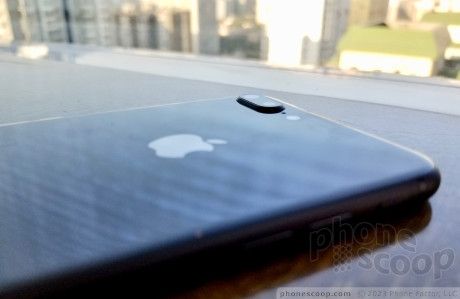
The iPhone 8 Plus is a monster of a device that pleases and disappoints at the same time. While new features, such as wireless charging and portrait photography, are great additions, the huge footprint and outdated display hold it back. Here is Phonescoop's full review.
Is It Your Type?
The Apple iPhone 8 Plus is for those who prefer iPhones and want a newer one, but don't want to spend $1,000 or more on an iPhone X.
Body
The iPhone 8 Plus has the same basic design and footprint as the 2016 iPhone 7 Plus, which mirrored the 2015 6s Plus, which in turn echoed the 2014 6 Plus. That means the 8 Plus is the fourth generation of hardware from Apple to rely on a nearly identical design. The big change in this year's phone is the switch from a metal rear panel to glass. The glass is nice, but, to be frank, I'm done with this form factor; it's dated and tired. I wish the 8 Plus were different from older iPhones, but that's why Apple created the pricier iPhone X.
There's no question that Apple makes high-quality devices. The front glass panel of the 8 Plus is curved along the edges and it tucks into the metal frame seamlessly. The same can be said of the glass that forms the rear surface. The metal frame itself is rounded gently and is comfortable against your skin. There are no sharp or pointy edges anywhere; the iPhone 8 Plus is incredibly smooth all the way around. The 8 Plus comes in space gray, silver, and a new shade of gold. The rose gold option has vanished from the lineup, as has the piano black finish, and the (product) Red variant. The glass of our space gray review unit definitely looks more gray than black.
Like the previous three generations of Plus models, the iPhone 8 Plus is gigantic. At 6.25 inches tall and 3.1 inches wide, it's one of the bigger phones out there. If you have small hands, the 8 Plus might be too much phone. I know many who prefer the more compact footprint of the standard iPhone 6/6s/7/8.
At more than 7 ounces, the 8 Plus is also very heavy. The size and weight together make the phone an obvious burden to your pocket. The smooth and rounded shape of the phone means it won't get snagged on pocket liners.
The quality of materials and manufacturing is top notch, as to be expected. Apple continues to build some of the most confidence-inspiring hardware in the world.
The 8 Plus has an IP67 rating for protection from water and dust. You can dunk the phone in 1 meter of water for up to 30 minutes and still have a working phone when you pull it out. It handles running water, sweat, and rain with no problem. You needn't worry about accidentally dropping it in the pool, kitchen sink, or bath.
You will, however, need to worry about dropping it onto concrete, asphalt, or other hard surfaces. Two glass panels doubles the likelihood you'll break something. The already-huge iPhone 8 Plus more or less demands it be wrapped up in a case of some sort, making it even larger. Considering how much these phones cost, I highly recommend you protect it.
What I dislike most about the iPhone 8 Plus is its unchanged display style. While Apple's competitors have moved to all-display faces, the 8 Plus maintains the horrendous bezels seen on the previous three generations of hardware. The 8 Plus is still priced like a flagship phone, but you're no longer getting a flagship design. (For that, you have to pay even more for the iPhone X.)
The iPhone 8 Plus carries over the capacitive home button from the 7 Plus. The Taptic Engine inside the phone provides physical feedback every time you press the button. You can dial in the amount of feedback you receive. I prefered the middle choice, and I'm glad Apple offers several options.
Home Button
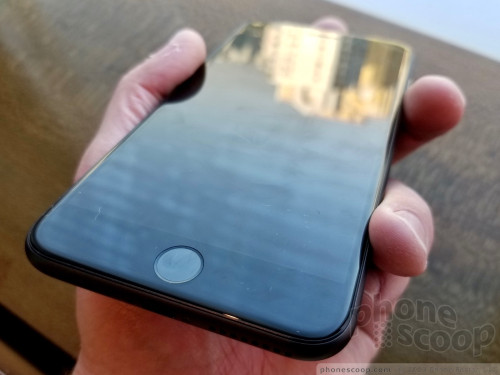
With iOS 11, a handful of actions are initiated by pressing the home button. A brief touch wakes the screen. A light press with an extra half-second of pressure will wake the screen and then unlock the phone if you have Touch ID enabled. A long-press opens Siri. Last, a double-press opens Apple Pay. I found it common to accidentally launch Apple Pay when I meant to wake or unlock the iPhone 8 Plus. Learning to finesse the home button takes some practice.
The ringer switch on the side is easy to find and use by feel, and the action is quite good. Few phones include a true ringer switch and I appreciate having it for quickly switching to silent/vibrate. The separated volume buttons below the ringer switch have good profiles and excellent travel and feedback. They double as shutter buttons when using the camera. The screen lock button and SIM card tray are positioned on the right edge of the phone. The 8 Plus's larger size means you often need to slide your thumb up the side to find the screen lock button. Action on the button is really good.
You won't find a headphone jack on the iPhone 8 Plus. The included headphones plug into the Lightning port, which is Apple's proprietary charging / data connector. Apple was one of the first to drop the headphone jack, and a few others have since followed. The iPhone 8 Plus can't charge and play music via the Lightning port at the same time unless you spend extra money on a dongle of some sort. Apple continues to rely on its own proprietary port rather than the standard — and just as capable — USB-C.
Lightning Port
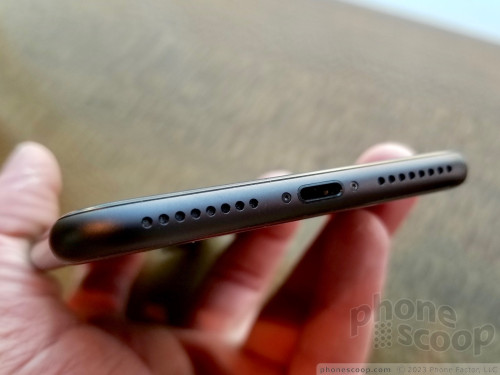
The iPhone 8 Plus's rear panel is perfectly flat, save for the camera module. The module protrudes significantly. I wish the camera did not stick out, as it makes the phone wobbly when placed on a hard surface. Using a case will resolve this issue.
You cannot access the battery. I do like the glass more than the metal of previous generations, but obviously this is a bit of a drawback. According to reports we've seen, repairing a broken rear panel on the iPhone 8 Plus will be more expensive than repairing the display itself. Get a case and/or invest in AppleCare+ insurance.
Rear Panel
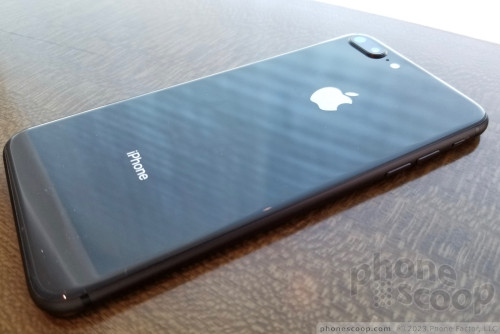
The iPhone 8 Plus is a well-made phone, but it's monstrously huge. I find the design boring, but Apple continues to manufacture some of the highest-quality hardware in the market.
Screen
The iPhone 8 Plus carries over the 5.5-inch full HD screen with 16:9 aspect ratio we've seen on the last three Plus models. Apple relies on in-plane switching LCD panels for its iPhones. The most significant change this year is Apple's move to its True Tone screen technology. Apple first deployed this tech on the iPad and now it's the iPhone's turn. True Tone automatically adjusts the white balance to match the ambient lighting. This means the screen's color will skew slightly blue or yellow so it is easier to read/see based on the surrounding light. To my eyes, the screen's tones most often looked yellow, or warm. You can turn True Tone off if you wish.
The screen adopts a wide color gamut to more accurately reproduce a full range of colors. When held side-by-side with an iPhone 7 Plus, the 8 Plus's screen did tend to pop a bit more with vibrant colors.
Apple says its dual”'domain pixels improve viewing angles, which is something LCDs typically don't do as well as OLED panels. I have no complaints about viewing angles on the iPhone 8 Plus, as the screen is easy to see as you tilt the phone from side to side. If there's any brightness drop or color shift I can't see it. The screen is easily bright enough to use outdoors under sunny skies. The oleophobic coating, which prevents fingerprints, is among the best on any phone.
As for the resolution, well, I am not as impressed. Almost every other phone in this price class has adopted quad HD resolution. With that said, the size and pixel density do suffice for browsing the web, watching videos, and enjoying social media. It's a fine display for the majority of people. (Though I'm looking forward to examining the higher resolution AMOLED display of the iPhone X later this year.)
Signal
The iPhone 8 Plus is widely compatible with U.S. LTE 4G networks. There are two significant versions: the A1864 (with a Qualcomm modem) and the A1897 (Intel modem). The Qualcomm variant doubles as the Verizon/Sprint and unlocked model, while the Intel variant is for AT&T/T-Mobile. The AT&T/T-Mobile version supports Band 66 for T-Mobile, but not the new band 71 (600 MHz). If possible, we recommend you buy the Verizon or unlocked model, as it is compatible with all U.S. networks and provides the most flexibility to end users. (Obviously this will depend on your own upgrade situation.) This year, Apple is selling the unlocked model immediately alongside the carrier variants. (Apple previously waited several weeks or even months before making the unlocked model available.)
We picked up the unlocked version and tested it briefly on AT&T, T-Mobile, and Verizon. The phone works very well on these three networks. I didn't experience any trouble connecting to 4G and saw strong LTE performance on each. Data speeds were excellent. You shouldn't have any trouble streaming media, such as music or video, over 4G. Voice calls connected on the first dial and the phone didn't drop any calls when moving at highway speeds.
Sound
On the iPhone 8 Plus, calls are generally clear and free of distortion via the earpiece, though I wish voices were a bit warmer. The earpiece generates enough volume to hear calls in most places. I was able to maintain conversations on busy city streets, bustling coffee shops, and traveling cars. People I spoke to through the iPhone 8 Plus said I sounded very good.
The speakerphone introduces just a teensy bit of distortion, but it also pushes plenty of air. You can use the speakerphone at home, the office, or in the car with no problem. Ringers and alarms are pleasantly loud, and the vibrate alert is excellent.
The iPhone 8 Plus improves upon the 7 Plus's stereo speakers. The earpiece leans toward trebly tones when listening to music, while the bottom-mounted speaker leans toward bass-y tones whether you're holding the phone in portrait of landscape orientation. Last year's phone was somewhat imbalanced in terms of the amount of sound produced by the earpiece and bottom speaker, but the iPhone 8 Plus produces much more even sound between the two speakers. Music and video sound better no matter how you're holding the phone.
Battery
Even though the iPhone 8 Plus is the same size as the 7 Plus, it actually has a smaller 2,675 mAh battery inside. This power supply is 20% to 40% smaller than those found in competing Android handsets, but that's not an apples-to-apples comparison because of the different OS and custom Apple chips inside. Based on the performance I experienced, you wouldn't know it has a smaller battery.
I used the phone while on a business trip and found it delivered the goods. This smartphone pushed through heavy days without breaking a sweat. I used it extensively for mapping and navigation, photography, social media, messaging, browsing, and music playback. I kept it connected to an Apple Watch via Bluetooth throughout my review period. On days when I demanded breakfast-to-bedtime battery life, despite all this usage, it managed with ease. I rarely saw the battery dip below 30%.
More importantly, the new iPhones include wireless charging for the first time. This is made possible in part by the glass rear panel. Apple selected Qi, one of two competing (and incompatible) wireless charging standards. So there are wireless charging pads out there that the new iPhones won't work with. (Today's high-end Android phones are dual-standard.) But Qi is popular, and will likely become the dominant standard now that Apple is behind it.
I used the 8 Plus with a Qi wireless charger and it certainly worked, though it was slower than charging via cable. (Samsung offers fast wireless charging in its high-end phones.)
As far as rapid charging is concerned, the iPhone 8 Plus does support faster charging than older iPhones, but the included charger won't charge the phone quickly at all. You are better off using an iPad charger, which will deliver a quicker charge thanks to higher wattage. Even then, the iPhone 8 Plus still won't charge as rapidly as competing Android handsets. The best solution is to buy the Apple charger that uses USB-C on one end and Lightning on the other, as it charges the quickest.
Bluetooth, GPS, NFC, WiFi
The iPhone 8 Plus includes Bluetooth 5.0. This isn't overly significant right now, but it ensures the iPhone will be compatible with high-performance Bluetooth 5.0 accessories.
The 8 Plus worked with all of the Bluetooth devices I threw at it. Apple's Bluetooth software made pairing with a variety of devices a simple, painless process. Calls sent to mono headsets sounded good, while calls routed to my car's hands-free system bordered on excellent. Music pushed to a stereo Bluetooth speaker sounded awesome.
The 8 Plus offers GPS and it worked perfectly with Apple (and Google) Maps. Apple's mapping app was able to find me quickly, and location was as good as 20 feet. The 8 Plus makes for a fine navigation device via Apple Maps, which adds lane guidance in iOS 11 and better traffic notifications.
NFC is on board. It powers Apple Pay, of course. But thankfully, iOS 11 unlocks the the NFC radio to do a bit more. Developers can take advantage of the NFC radio for new features, though we have yet to see these tools become available in the real world.
The 8 Plus packs dual-band WiFi with MIMO. This means the 8 Plus is compatible with the fastest WiFi networks. I had no trouble at all with the 8 Plus's WiFi.
Comments
Obvious bias in your iPhone 8 plus review!
The iPhone is more refined, more feature oriented and has the best quality hardware on the market but to you its boring, over and over and over again!
When you build the best hardware and software, why do you need to remake it every year? I am positive that you will have bones to pick with Apple's iPhone X.
I used to look at phone scoop as a good source of hones...
(continues)
Why?


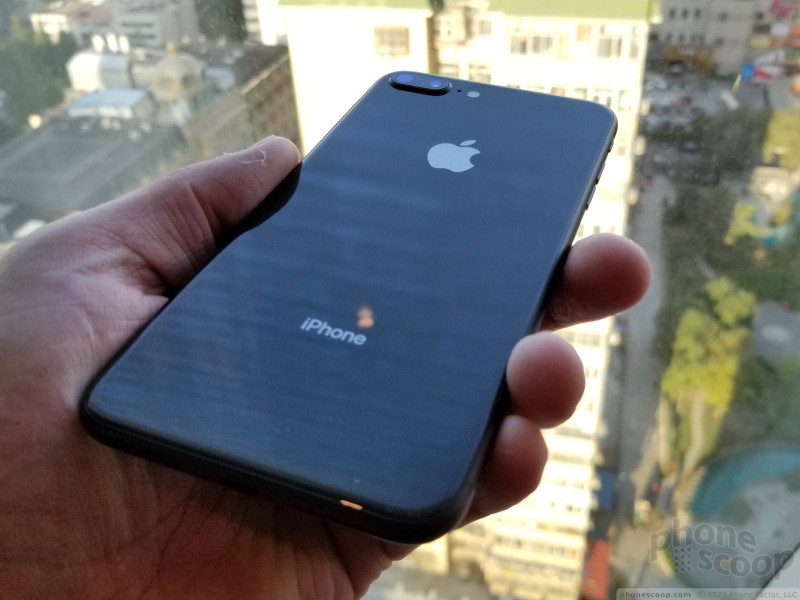















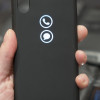 Iconcase Adds Notification Lights to Your iPhone
Iconcase Adds Notification Lights to Your iPhone
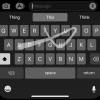 Apple Releases iOS 13 Public Beta
Apple Releases iOS 13 Public Beta
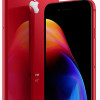 Apple Debuts (Product) Red Special Edition iPhone 8 and iPhone 8 Plus
Apple Debuts (Product) Red Special Edition iPhone 8 and iPhone 8 Plus
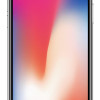 Verizon Debuts Discounted iPhone Promo
Verizon Debuts Discounted iPhone Promo
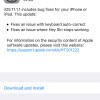 Apple Releases iOS 11.1.1 to Fix Keyboard Bug
Apple Releases iOS 11.1.1 to Fix Keyboard Bug
 Apple iPhone 8 Plus
Apple iPhone 8 Plus









